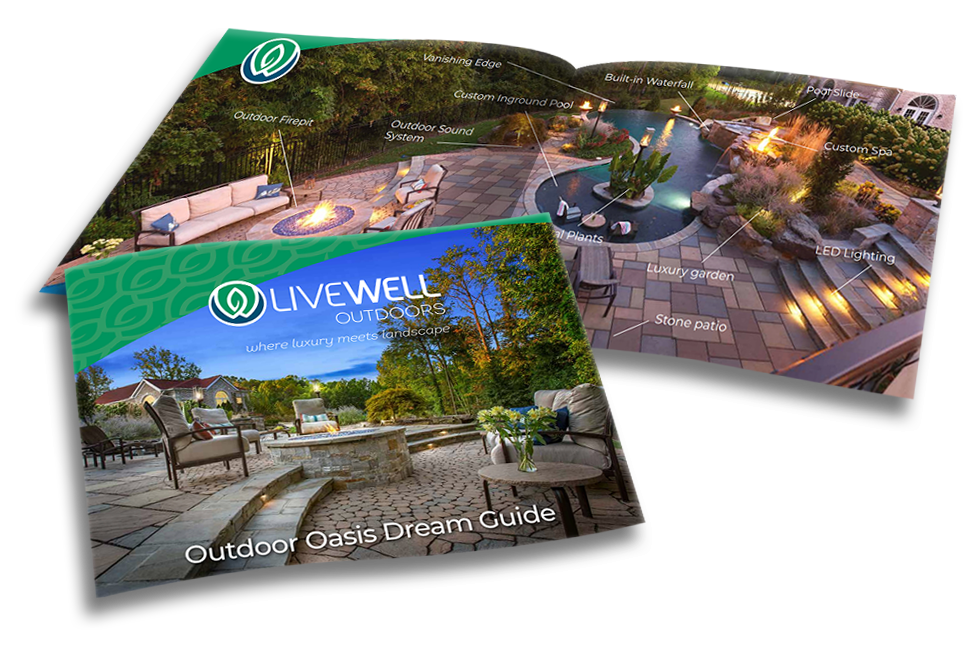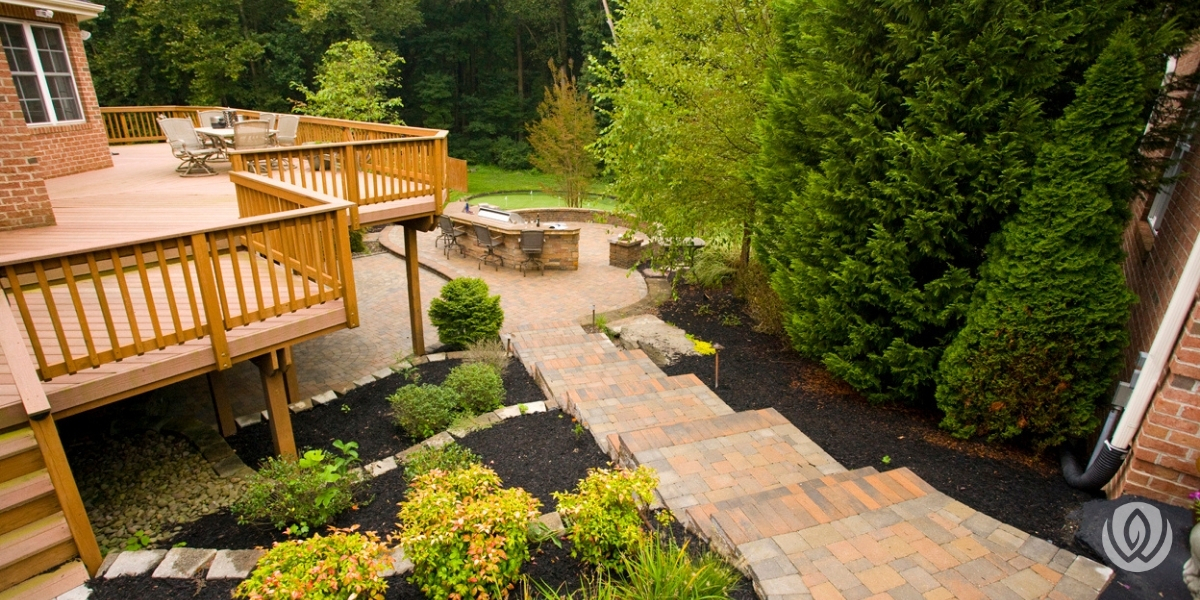
A well-designed walkway does more than organize movement—it refines the entire landscape. It protects planted areas, preserves clean lines, and quietly shapes how a space is used and experienced.
The effect is subtle but significant. A thoughtful path draws connections between outdoor zones, brings clarity to the layout, and adds a sense of order that elevates everything around it.
This guide features ten walkway solutions that balance function and design. Each material offers distinct advantages—from durability to drainage to visual tone—so you can choose what works best for the way your outdoor space is meant to live.
Here’s how the most effective materials compare—and what each one brings to the landscape.
Pavers are a go-to for building stylish, durable paths that tie together patios, driveways, and garden zones. They suit both formal entrances and relaxed backyard settings.
Creative Design Idea: Mix textures or colors for contrast, or match existing hardscape to create flow. Pairing pavers with gravel or moss adds visual interest and softens the look.
Real-World Functionality: In the Mid-Atlantic, pavers handle freeze-thaw cycles well—just ensure solid edging and a stable base. Drainage channels help prevent pooling in low spots.
Design Tip: Use diagonal patterns to visually widen broad areas; stick with straight lines for narrow or utilitarian routes.
These specialized pavers let water pass through the joints, helping reduce runoff and erosion. They offer the same aesthetic flexibility as traditional options but with added eco-benefits.
Creative Design Idea: Line the path with low-growing groundcovers like thyme or moss to soften edges and reinforce a natural look.
Real-World Functionality: A great fit for storm-prone or sloped yards. Just make sure they’re installed with a proper base to ensure good drainage.
Design Tip: Integrate native plantings along the borders to encourage absorption and visually connect the path to your landscape.

Flagstone, bluestone, and slate offer surface richness and visual warmth that manufactured materials can’t replicate. These paths work equally well in formal gardens and rustic landscapes.
Creative Design Idea: Mix large, irregular slabs with smaller stepping stones for a meandering layout that feels organic and informal.
Real-World Functionality: Durable in all seasons but can be slippery when wet—especially in shaded zones. Textured finishes improve traction.
Design Tip: Use gravel or decorative stone along the edges to highlight the path’s natural shape and add contrast.
These walkway ideas from LiveWell Outdoors projects will give you a bit of inspiration.
Stepping stones offer a flexible way to guide foot traffic without disrupting the surrounding landscape. They work especially well in side yards, between garden beds, or around gathering areas.
Creative Design Idea: Curve the layout to encourage exploration, or use a straight-line pattern for a more modern look.
Real-World Functionality: They hold up well through changing seasons but can shift with freeze-thaw cycles. Check stability each spring.
Design Tip: Plant creeping thyme or moss between the stones to add color, fragrance, and a soft visual finish.
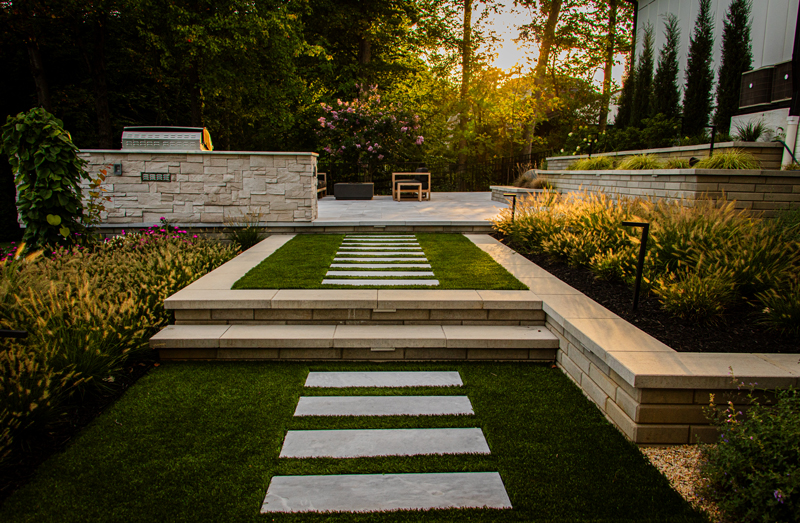
Gravel is one of the easiest materials to work with when creating informal walkways or sloped paths. It’s cost-effective, quick to install, and excellent for drainage—especially in areas prone to runoff or heavy rain.
Creative Design Idea: Choose decorative gravel in contrasting colors, or mix it with stepping stones to break up long paths visually. Use edging to maintain clean lines and prevent spreading.
Real-World Functionality: Gravel drains well but can shift without containment. Edging is essential, particularly on slopes or in high-traffic zones. For a more engineered, eco-conscious alternative, open-graded gravel is used in sustainable paving systems that improve water infiltration and reduce runoff.
Design Tip: Frame gravel walkways with low-growing plants or structural edging to give definition and keep materials in place.
Brick paths bring timeless structure and character to landscapes—particularly for colonial or historic homes.
Creative Design Idea: Lay bricks in a herringbone or basketweave pattern to add texture. Keep lines crisp for a formal finish.
Real-World Functionality: Extremely durable, but shady or damp spots can grow moss. Textured or sealed bricks reduce slipperiness.
Design Tip: Add low lighting or lanterns along the edges to highlight symmetry and improve safety after dark.
Concrete is one of the most versatile walkway materials. It can be poured in nearly any shape, stained with color, or stamped to mimic stone or tile.
Creative Design Idea: Go minimalist with clean lines or incorporate geometric patterns and tile insets for a modern flair.
Real-World Functionality: It holds up well but may crack in extreme freeze-thaw zones. Use expansion joints and seal regularly to maintain durability.
Design Tip: Pair with architectural lighting or a water feature to turn the walkway into a landscape focal point.
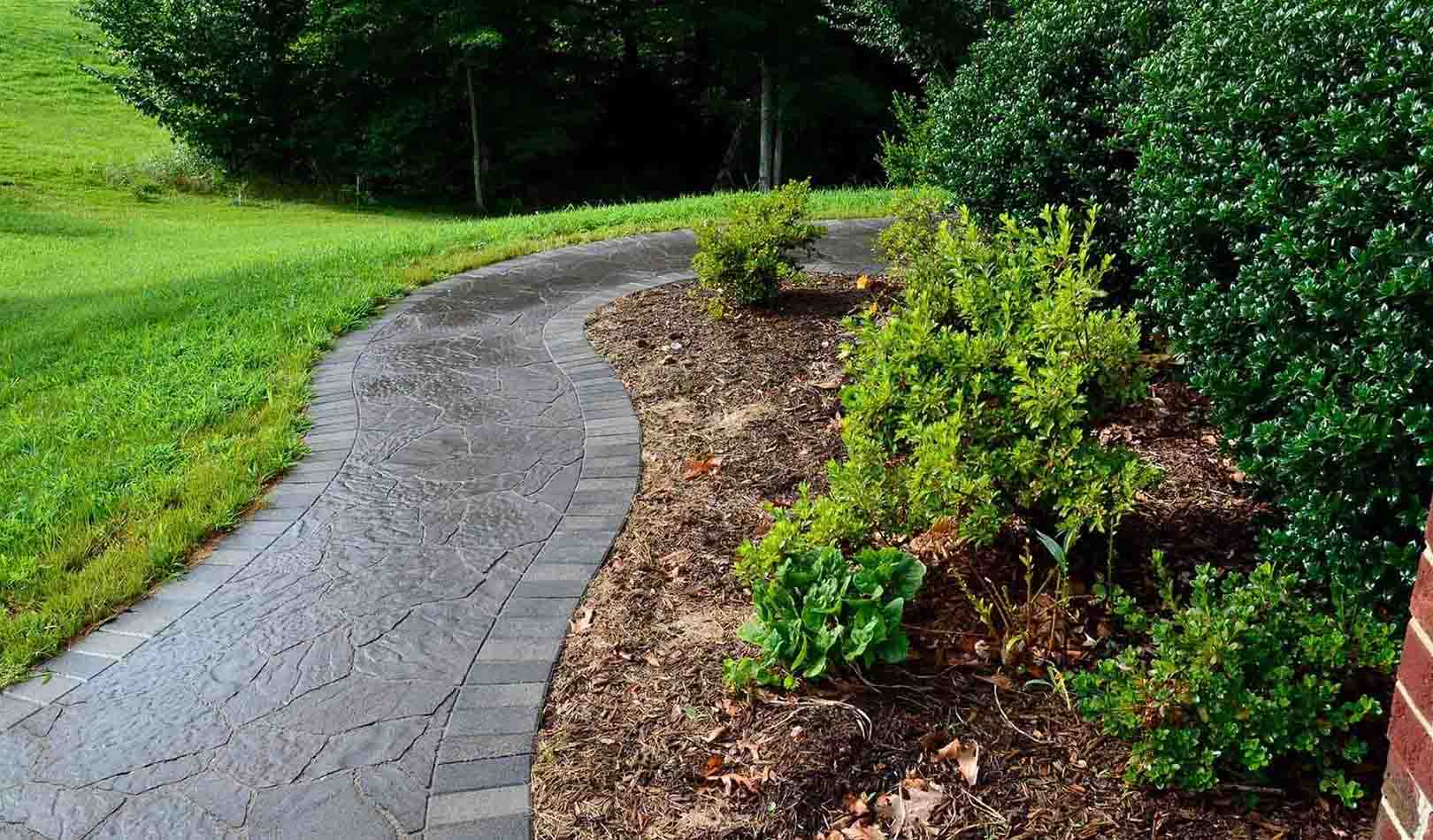
Wood paths work especially well in shaded gardens, near water features, or in wooded settings. They add warmth and a soft, organic presence.
Creative Design Idea: Build a boardwalk to a pond or sitting area, or lay wide planks over gravel for a more rustic aesthetic.
Real-World Functionality: Vulnerable to rot in humid conditions unless pressure-treated or composite materials are used. Sealing is essential for longevity.
Design Tip: Try a floating effect in wet zones or place planks in staggered segments for visual rhythm.
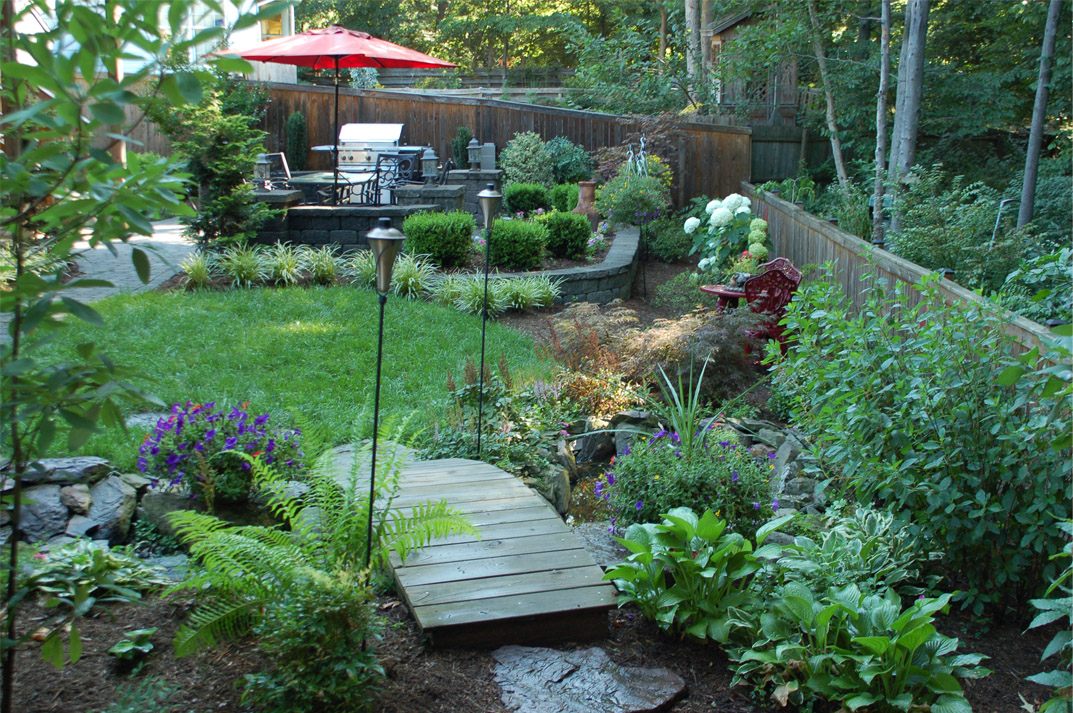
Mulch isn’t typically used for primary paths in upscale landscapes—but it has a place. In informal gardens, wooded areas, or between stepping stones, it offers a soft, organic underfoot feel that blends effortlessly into planted surroundings.
Creative Design Idea: Use mulch to create subtle paths through perennial beds or naturalized plantings. Define edges with timber, steel, or stone to keep the lines clean and contained.
Real-World Functionality: Mulch is permeable, lightweight, and easy to replenish—but not ideal for high-traffic zones. It works best where movement is occasional and the goal is to reduce soil compaction or support healthy root systems.
Design Tip: Combine mulch with structured elements—like stone steps or edging—to elevate the look and extend its longevity.
Can’t commit to just one material? Some of the best walkways mix elements to match different zones of your yard.
Combining different materials—like stone and gravel, or wood and pavers—opens up unlimited design possibilities.
Creative Design Idea: Use large porcelain tiles with gravel joints or mix timber and pavers for a dynamic, high-contrast effect.
Real-World Functionality: Transitions need careful attention to prevent tripping hazards. Maintenance levels will vary by material.
Design Tip: Change materials along the path to define zones or direct movement toward focal points like seating areas or water features.
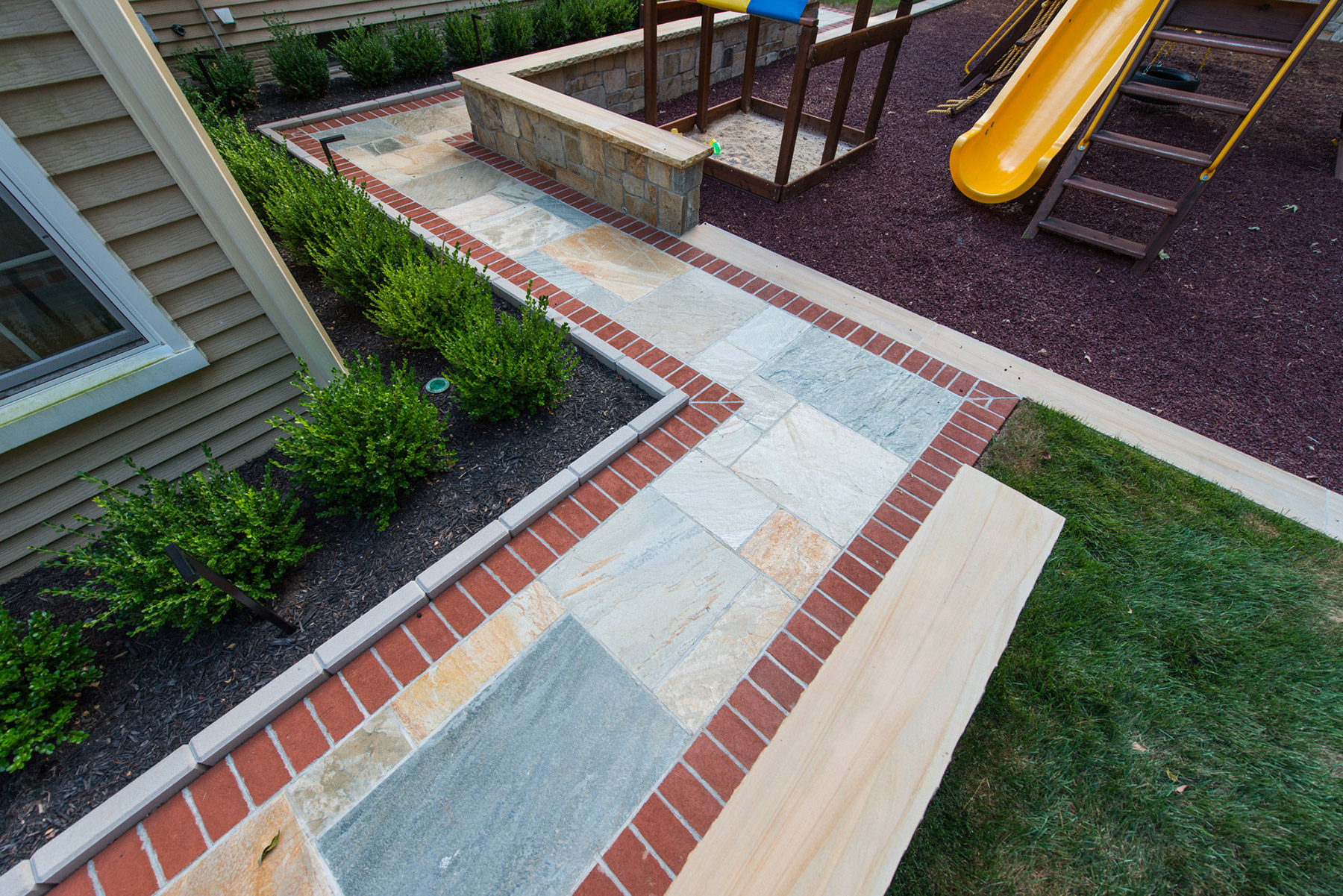
If you're comparing options, here’s a quick breakdown of where each material performs best.
| Material | Maintenance | Design Flexibility | Best Uses | Performance in Mid-Atlantic |
|---|---|---|---|---|
| Pavers | Low | High | Front entry, patio, poolside | Durable year-round; dark tones show debris |
| Permeable Pavers | Low–Medium | High | Slopes, water-prone zones | Excellent if base is installed correctly |
| Natural Stone | Medium | Medium | Garden trails, shaded areas | Long-lasting; textured finish recommended |
| Stepping Stones | Medium | Medium | Informal paths, garden beds | Check stability after winter |
| Gravel | Low | Medium | Slopes, relaxed layouts | Great drainage; needs edging |
| Brick | Medium | Medium | Historic or formal homes | May be slick in damp shade |
| Concrete | Low | High | Modern homes, utility paths | Reliable with sealing and joints |
| Wood | High | Medium | Wet or wooded areas | Needs sealing; composites last longer |
| Mulch | High | Low | Temporary or light-use paths | Affordable but short-lived |
| Mixed Materials | Variable | Very High | Custom designs | Versatile with thoughtful transitions |
Once you've explored your material options, it's worth stepping back to consider how the walkway fits into the bigger picture.
With the options in mind, you likely have a clear vision of how your walkway could take shape. Here’s how to move it from idea to reality.
A well-designed walkway won’t call attention to itself—but it will change how your landscape works. It brings shape to open space, guides movement naturally, and ties together every part of the yard.
If you’re looking to make that kind of change, it’s worth working with a team that understands both the design and the build. LiveWell Outdoors handles every step—from layout and material selection to final construction—so the end result feels cohesive, intentional, and built to last.
Schedule a consultation to start planning a walkway that truly fits your space.
"*" indicates required fields
